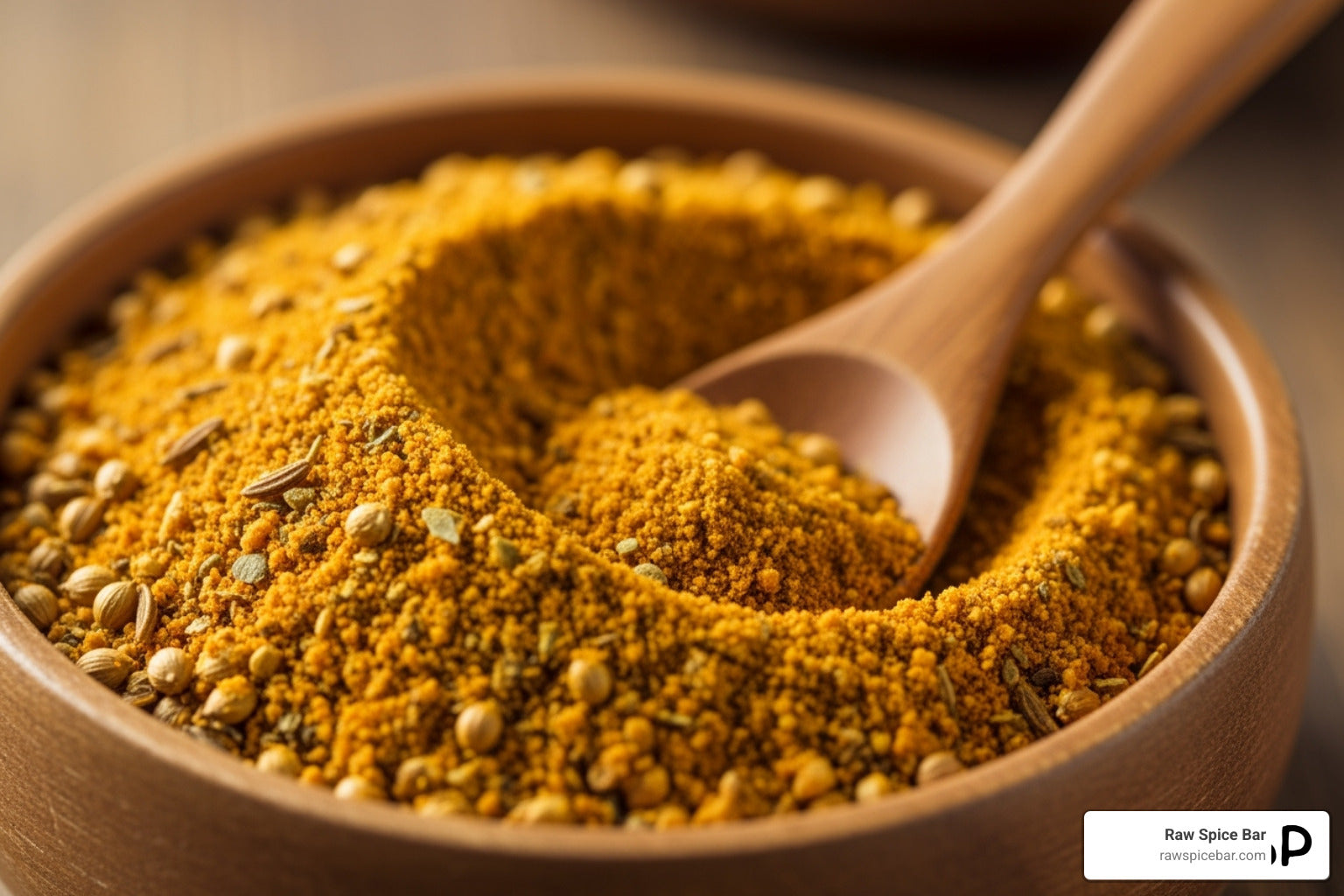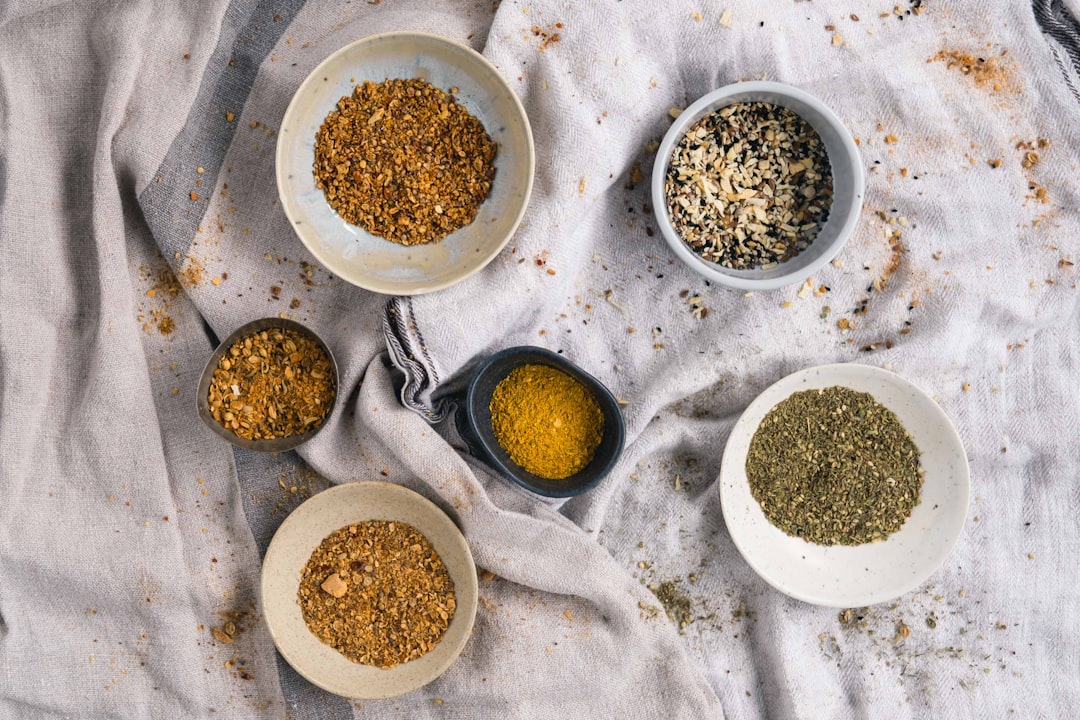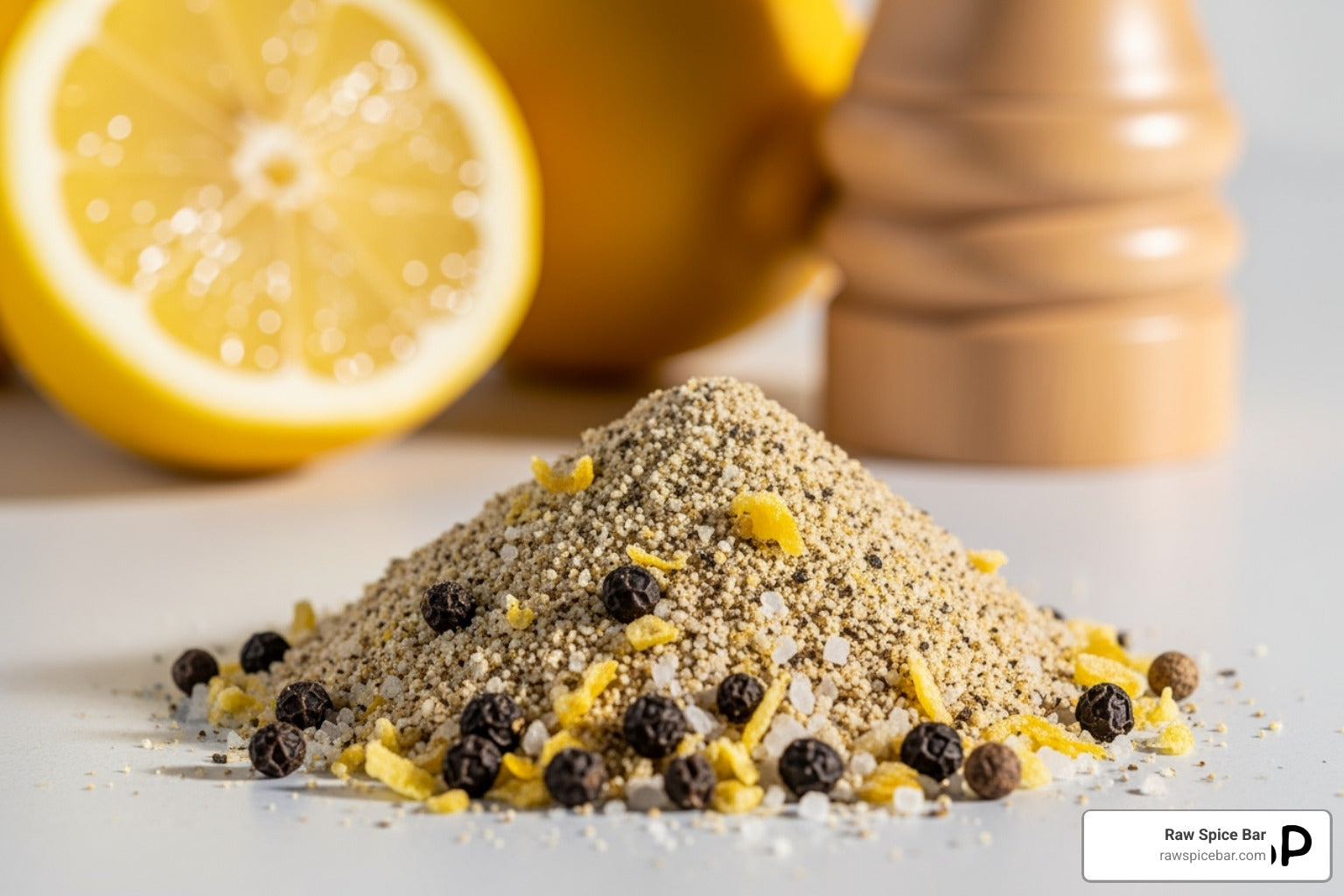Are you tired of the same old meals that lack excitement and flavor? Imagine transforming your dishes with bold, dynamic spices that turn every meal into a culinary adventure. By embracing fresh and vibrant seasonings, you can elevate your cooking and tantalize your taste buds in ways you never imagined.
Here at Raw Spice Bar, we bring the world to your kitchen with unique spice blends crafted from the freshest ingredients. Each blend is designed to transport you across the globe with every bite. Whether it's the kick of Creole cuisine or the warmth of Greek dishes, these blends burst with authentic taste.
Join the journey with our global spice subscription. It's not just about adding flavor; it's about reinventing your meals with creativity and flair. With each delivery, you receive hand-blended spices and recipe cards, making it easy to explore new culinary landscapes right from your kitchen.
Understanding Flavor Profiles
Spice can transform your kitchen experience, and understanding flavor profiles is essential. Knowing the basics of taste and how flavors work together will elevate any dish you create.
The Five Basic Tastes
When adding spice, start with the five basic tastes: sweet, sour, salty, bitter, and umami. Each taste plays a crucial role in flavor balance. Sweetness can soften spiciness, while sour taste adds freshness. Salt enhances overall flavors, making them pop. Bitterness contributes complexity, like in dark chocolate or coffee. Umami, often found in mushrooms or soy sauce, adds depth. At Raw Spice Bar, our spice blends incorporate these tastes to create rich and varied flavors. A well-seasoned dish uses a harmonious blend of these elements.
Flavor Pairing Essentials
Pairing flavors involves combining tastes that complement each other. For example, pairing spicy with sweet can create a balanced taste, like adding honey to a spicy sauce. Salty and sour elements often work well together to enhance freshness, as seen in dishes with citrus and salt. Herbs and spices should align with the dish's profile. In a Mediterranean-inspired meal, you might use oregano and thyme.
We offer a global spice subscription that makes pairing easy by providing new spice blends with recipe cards. This ensures you have the essentials to experiment and discover new flavor combinations effortlessly. With our carefully crafted blends, you can explore different cuisines without overwhelming your taste buds.
Selecting Quality Ingredients
To ensure your spices enhance rather than overpower your dishes, it’s crucial to choose ingredients that promise freshness, distinct flavors, and ethical origins. Consider these key aspects when selecting spices for your kitchen.
Freshness Factors
Fresh spices can transform a dish with vibrant, bold flavors, while stale ones might leave it bland. Pay attention to color and aroma. Spices should have a strong scent and rich color; if they're faded or dull, they're likely old.
Proper storage is essential for maintaining freshness. Keep spices in airtight containers, away from heat, light, and moisture. Consider grinding whole spices just before use for maximum flavor impact.
Herbs vs. Dried Spices
Understanding the difference between herbs and dried spices can refine your cooking. Herbs, like basil and parsley, are typically used fresh and added towards the end of cooking to preserve their subtle, bright flavors. Dried spices, such as cumin and paprika, are often used at the start, releasing deep, complex flavors as they cook.
Both types can vary greatly in potency depending on freshness. Using high-quality herbs and spices ensures you achieve the intended taste profile in your dishes.
Sourcing Ethical and Sustainable Options
Choosing ethical and sustainable spices not only benefits the planet but also supports better farming practices. Look for suppliers that provide fair trade, organic, or eco-friendly certifications. This way, you ensure that farmers are treated fairly and the environment is respected.
Classic Seasonings from World Cuisines
Explore the unique seasonings from different parts of the world to discover how each culture brings a distinct touch to their culinary creations. From fragrant Mediterranean herbs to the bold spices of South Asia and the fiery chili mixes of Latin America, each region offers a flavorful journey. This glimpse into global flavors can inspire you to elevate dishes with authentic seasonings.
Mediterranean Aromatics
Mediterranean cuisine is celebrated for its use of fresh herbs and spices that add depth and aroma. Think of oregano, basil, and rosemary. These herbs often highlight dishes like pastas and roasted vegetables. Oregano pairs well with tomato-based sauces, while rosemary complements meats like lamb and chicken.
Garlic and lemon are also classic staples that enhance Mediterranean dishes with their bright flavors. In particular, garlic finds its place in many sauces and stews, while lemon adds a zesty finish. Using a combination of these ingredients can transform simple recipes into elegant and flavorful meals.
South Asian Spice Blends
South Asian spices bring warmth and complexity to dishes. Curry powders and garam masala are notable blends packed with unique flavors. Common ingredients include cumin, coriander, turmeric, and cardamom. These spices are versatile and can be used in curries, marinades, and rice dishes.
Each region in South Asia has its own blend that best represents its local taste. For instance, Indian cuisine often features turmeric and chili powder for their vibrant colors and flavors.
Latin American Chili Mixes
Chilies define the bold flavors of Latin American cuisine. From the smoky chipotle to the aromatic ancho, these peppers add a punch to your meals. Chili mixes are often used in salsas, stews, and tacos, bringing heat and depth to each bite.
Incorporating dried or fresh chilies can vary the intensity of heat. Classic seasonings like cumin and oregano often accompany chili to add a savory touch.
Creating Your Own Seasoning Blends
Crafting your own seasoning blends allows you to adjust flavors to suit your palate, ensuring fresh and bold tasting meals. By balancing flavors, using proper grinding and toasting techniques, and storing your blends correctly, you can elevate your cooking experience.
Balancing Flavors
Creating a balanced seasoning blend is all about mixing different tastes to achieve harmony. Start by choosing a foundation ingredient like salt or pepper for structure. Add in spices that provide bold flavors such as paprika or cumin.
Next, consider spices for warmth and depth like cinnamon or allspice. Include fresh notes with herbs like basil or mint. Taste regularly during mixing to adjust the proportions, giving each spice a chance to shine.
Don't forget to consider the cuisine you are targeting. For example, an Herbs De Provence blend includes thyme and rosemary for a distinct French flavor.
Grinding and Toasting Techniques
For fresh and vibrant blends, proper grinding and toasting techniques are essential. Start with whole spices as they hold flavor longer than pre-ground versions. Use a mortar and pestle or a spice grinder for even consistency.
Toasting spices is a simple technique that enhances flavor. Heat a dry skillet over medium-low heat and add spices, stirring frequently. Watch for a change in color or when aromas are released. Remove from heat immediately to prevent burning.
Toasting can make a big difference, particularly in blends like a Lebküchen spice mix where warmth and spice complexity are key.
Storing Homemade Blends
Proper storage is crucial to maintaining the freshness of your spice blends. Transfer your blend to an airtight container immediately after grinding to lock in flavor. Keep it in a cool, dark place away from direct sunlight or heat sources, which can degrade spices over time.
Use labels to mark the date when you made the blend. This ensures you use them while they're at their freshest, typically within 6 months.
Innovative Uses of Spices in Cooking
Spices offer endless opportunities for enhancing various dishes. From creating infused oils to adding unexpected flavors to desserts and crafting unique marinades, you can elevate your cooking in exciting ways.
Infusing Oils and Vinegars
Infusing oils and vinegars with spices is a great way to add an extra layer of flavor to your meals. Start by choosing a base oil, like olive or sunflower, and pair it with spices to suit your taste. For a Mediterranean touch, combine olive oil with rosemary and garlic.
Vinegars, such as balsamic or apple cider, can be infused with spices like cinnamon or star anise for a warm, spicy kick. This method allows the spices to steep over time, creating rich and complex flavors that transform simple salads and dressings into extraordinary dishes.
Seasoning Sweets and Desserts
Spices aren't just for savory dishes—they can add depth and intrigue to desserts as well. Consider adding a pinch of cinnamon or cardamom to your baked goods for a warm, sweet aroma. Try incorporating ginger or nutmeg into cookie dough for an extra zing.
Using spices like cloves and allspice in desserts can also enhance the flavor profile, giving a hint of exotic spice. Your next chocolate cake can become a masterpiece with a touch of cayenne for unexpected warmth and richness.
Crafting Signature Marinades
Creating your own marinades is another innovative way to use spices. A well-crafted marinade can tenderize meat and infuse it with bold flavors. Start with a simple base of oil, acid, and spices. For instance, blend garlic, cumin, and lime juice for a zesty, citrusy marinade perfect for chicken or fish.
Adding unique spices can also personalize your marinades. Try mixing smoked paprika with brown sugar and soy sauce for a sweet and smoky delight.
Pairing Seasonings with Foods
When it comes to enhancing your culinary creations, matching the right seasonings with the right foods is crucial. Different spices can bring out the best in vegetables, meats, and grains, turning a simple meal into a memorable experience.
Vegetable and Spice Synergy
Pairing vegetables with the right spices can elevate their natural flavors. Try sprinkling cumin, coriander, or smoked paprika on roasted vegetables for a warm, earthy taste. If you're working with leafy greens, a hint of nutmeg or chili powder can add depth.
For Asian-inspired stir-fries, a dash of ginger and garlic powder can enhance the dish.
Meat, Poultry, and Fish Enhancements
When it comes to meats, using the right seasoning can enhance texture and flavor. A classic choice for beef is a mix of black pepper and garlic powder. For chicken, consider a blend of paprika, thyme, and oregano. Fish benefits from lighter seasonings like dill or lemon zest.
Spices like cumin and cinnamon can create a robust crust for lamb or pork.
Boosting Grains and Legumes
Grains and legumes are fantastic canvases for spices. Rice becomes fragrant and flavorful with saffron or turmeric. Lentils benefit from a touch of curry powder or bay leaves. Quinoa can be revitalized with lemon pepper seasoning or a smoky chipotle blend.
Techniques for Maximizing Flavor
Enhancing your dishes with spices isn't just about adding heat or color; it's about unlocking a full spectrum of flavors. Timing, layering, and intensity adjustment are essential for creating memorable meals.
Correct Seasoning Timing
Getting the timing right when adding spices can transform your dish from ordinary to extraordinary. Early seasoning allows spices to meld with ingredients, enhancing depth. For instance, adding spices like cumin early in the cooking process lets them fully infuse into the dish.
Meanwhile, some spices are best added toward the end to preserve their bold taste. Fresh herbs like basil or cilantro maintain their vibrant flavor and color when added just before serving. Experimenting with different timings helps you discover what brings out the best in each spice.
Layering Spices Throughout Cooking
Layering spices is a technique that builds complexity in your dishes. Start with whole spices during initial cooking stages to create a base flavor. As the dish progresses, add ground spices to intensify the aromas and taste. This approach ensures that spices are present at every bite, providing a more robust profile.
Using a variety of spices at different stages allows individual characteristics to shine without overwhelming the dish. This method is excellent for stews or curries that require a rich flavor palette. Layering can turn simple meals into intricate culinary experiences, making every meal with Raw Spice Bar feel like a global adventure.
Adjusting Intensity and Heat
Balancing intensity and heat is crucial for satisfying flavor. Start by considering your spice tolerance and the preferences of those you're cooking for. Mild spices like paprika can add color and smoky taste without overpowering the dish.
For those seeking more heat, spices like cayenne or chili powder are perfect. Testing small amounts ensures the heat level complements rather than dominates. You can always add heat, but it's much harder to tone it down once it's there. This careful adjustment leads to dishes that please the palate and showcase the true potential of fresh, gourmet spices delivered through our carefully crafted blends.
Care and Maintenance of Seasonings
Proper care for your seasonings ensures maximum freshness and flavor. By storing spices correctly and reviving those that have lost their potency, you maintain an exciting culinary palette in your kitchen.
Shelf Life and Storage Tips
Ground spices generally maintain their potency for about 1-3 years, while whole spices can last up to 4 years. Herbs like basil can also last 1-3 years. To keep them fresh, store spices in cool, dark places. Airtight containers protect them from moisture and heat, which can degrade their quality.
Consider using clear, labeled containers for easy identification. Keep spices away from the stove and sunlight to prolong their life. Regularly check your spices’ aroma and color to ensure they’re still fresh. When flavor or scent becomes weak, it’s time to replace them.
Reviving Stale Spices
When spices lose their luster, you can often rejuvenate them. Use the "smell test" by rubbing a small amount in your hand. If the scent is weak, try heating the spice lightly in a dry pan to release essential oils. This often brings back some intensity.
Check the spice's color. Dull colors may indicate faded flavor. If the visual and aroma tests fail, it's likely time to retire these spices.
Hosting with Bold Seasonings
Elevate your hosting skills by using fresh, creative spices. Craft meals that captivate your guests' senses and leave lasting impressions. Tailor your menu with spice-centric themes for an unforgettable dining experience.
Impressing Guests with Unique Spice Choices
Transform your hosting skills by selecting seasonings that surprise and delight. Experiment with global spices to bring new flavors to your table. Imagine serving a dish enhanced with a Moroccan blend, rich with cumin and cinnamon, or a Japanese mix featuring shichimi togarashi.
Raw Spice Bar creates unique spice blends that capture the tastes of different cultures. These blends can turn a regular dinner party into an exciting culinary journey.
Explore using spices like smoked paprika or za'atar to introduce fresh tastes. Each choice adds character and depth to your dishes. Use these spices in appetizers, main courses, or even desserts to keep your guests intrigued.
Menu Planning and Spice-Themed Dinners
Plan your menu with spice themes to create a cohesive dining experience. Select a region or cuisine and use it to guide your spice selections. For instance, a Middle Eastern-themed dinner might feature dishes spiced with sumac, cardamom, or cumin.
Design your courses to highlight different spices. Start with a spice-infused soup or salad, proceed with a main dish, and conclude with a dessert that complements your chosen theme. This approach keeps your guests engaged and eager to discover each flavorful course.
Frequently Asked Questions
Explore essential ingredients for bold seasonings, discover recipes enhanced by fresh spices, and learn how to store and amplify flavors. Experiment with unique spices and get tips for pairing them with different dishes.
What are the essential ingredients for creating bold seasoning mixes?
Creating bold seasoning mixes often requires a blend of salt, pepper, garlic powder, paprika, and chili powder. These provide a vibrant base that can be expanded with more unique spices like turmeric or cumin. At Raw Spice Bar, we offer a variety of spice blends, ensuring you have everything needed for flavorful cooking.
Which recipes can be transformed with fresh, bold spices?
Many recipes can be uplifted with fresh spices, from simple soups to complex roasts. Use spices to enhance your favorite dishes like curries, tacos, or pastas. Even a basic grilled chicken can turn extraordinary with the right spice mix. Bold spices truly elevate your culinary experience.
How do I properly store spices to maintain their freshness?
Store your spices in a cool, dark place away from sunlight and heat to maintain their freshness. Use airtight containers to keep moisture out. This helps in preserving the essential oils and flavors of the spices. Remember, fresher spices make for better tasting dishes.
What techniques can be used to amplify the flavor of spices in cooking?
To amplify spice flavors, toast them in a dry pan until aromatic, or bloom them in hot oil. Both techniques release the essential oils, enhancing their potency. Adding spices early in the cooking process also allows their flavors to meld seamlessly into the dish.
What are some uncommon but impactful spices to experiment with in the kitchen?
Experiment with spices like sumac, za'atar, or fenugreek to introduce new flavors into your meals. These spices are rising in popularity for their unique tastes and are perfect for adventurous cooks. They can transform even the simplest of recipes into something special.
Can you recommend a guide for pairing spices with different types of dishes?
Understanding flavor profiles helps in pairing spices with dishes. Bright and zesty spices work well with seafood, while earthy spices enhance meats and stews. Try our spice subscription at Raw Spice Bar for global spices and recipe cards, guiding you in creating delicious, harmonious meals.




